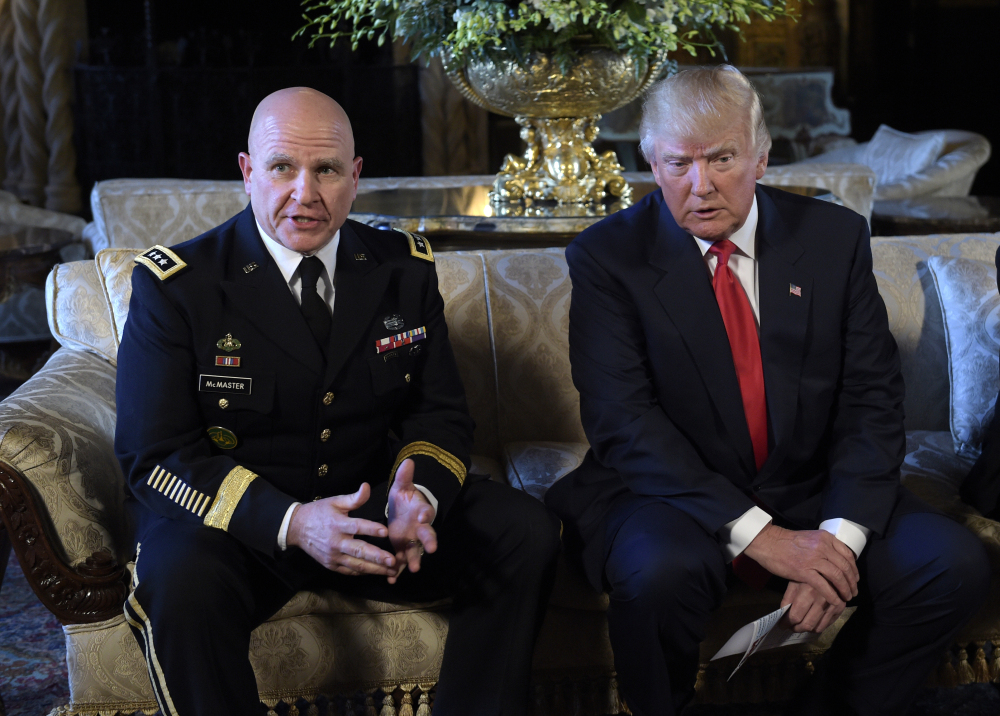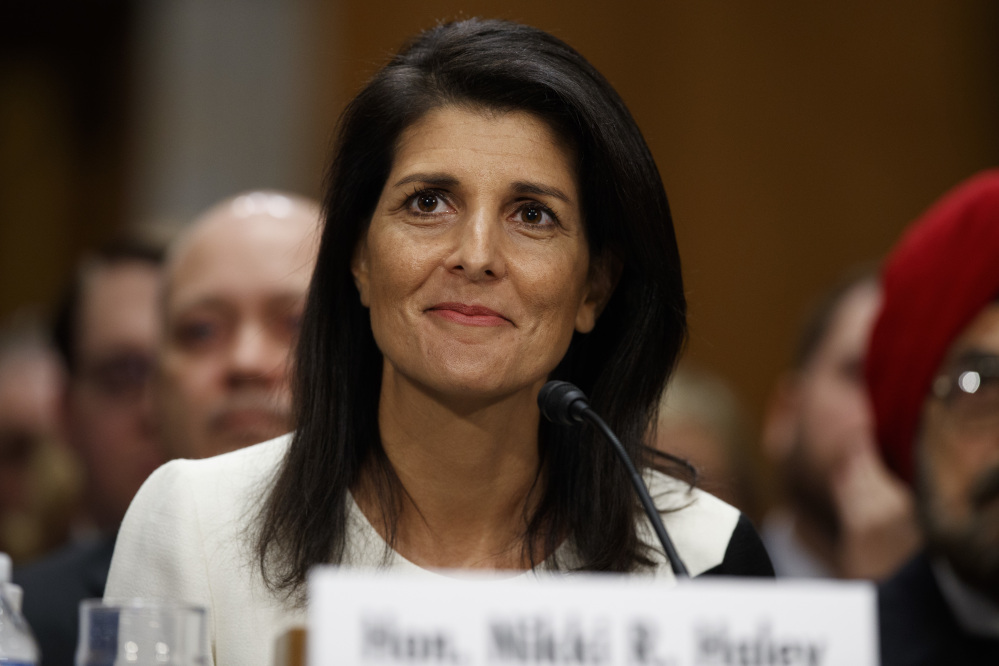The first American airstrike aimed at the Syrian regime prompted praise from America’s allies, concern from Congress and condemnation from Russian and Syrian officials, who slammed the attacks and warned that they would only produce more terrorism and instability.
Less than a day after President Trump ordered the attack to punish Syrian President Bashar Assad for using chemical weapons on his own people, senior U.S. officials from the Pentagon to the United Nations fanned out to make the case for the attacks.
Secretary of State Rex Tillerson described the operation as an “overwhelming success.”
“I think all Americans and all our allies in the Free World should take great comfort in what occurred with that strike last night,” he told reporters.
On Capitol Hill, many lawmakers described the attacks as long overdue and a necessary exercise of American leadership on the world stage, even as many Democrats warned that Trump will need to seek their approval if he strikes Assad again or seeks to escalate American involvement in the war.
“Unilateral military action by the U.S. in a Middle East conflict causes grave concern, given the lack of any Authorization for Use of Military Force from Congress and the absence of any long-term plan or strategy,” said Sen. Kirsten Gillibrand, D-N.Y.
MOMENTUM GOING FORWARD
The challenge for Trump in the coming days will be finding a way to capitalize on the momentum from the strike and craft a long-term strategy without getting sucked more deeply into the grinding, six-year-old conflict that shows no signs of ending.
The Pentagon has so far indicated that there are no further military plans to retaliate against Assad and that it will continue its effort to defeat the Islamic State in the region.
The volley of more than 50 cruise missiles launched from ships in the eastern Mediterranean Sea at first glance looked like a dramatic American escalation of the conflict. “This was not a small strike,” said Lt. Gen. H.R. McMaster, Trump’s national security adviser, just hours after the missiles had slammed into their targets at Shayrat airfield.
But by almost any measure, the cruise-missile strike was a narrowly defined attack that appeared designed to punish without prompting a major counterreaction from Russia or Iran. The strike approved by Trump did not target the Syrian regime leadership or seek to significantly weaken its capabilities to wage war. Instead, it focused exclusively on the remote and relatively spartan air base that was used to launch the chemical attack Tuesday.
Sharyat airfield is home to a relatively modest contingent of Su-22 ground attack jets and MiG-23 fighter aircraft. Photos taken by Russian journalists and displayed on Russian media outlets show that some of the missiles hit aircraft in reinforced hangars, while some were left unscathed.
Tillerson said the runways, which are constructed of thick concrete, were not the main target of the strikes. Instead, the Pentagon selected targets such as planes, hangars and refueling facilities, to render the base inoperable.
“The fact that planes may be landing in and out of there, they are not refueling and they’re not able to initiate any activity from that airport today,” he said.
Before launching the cruise-missile assault, McMaster said, U.S. officials “took great pains” to warn Russians operating at the base that missiles were coming to prevent any Russian casualties and avoid sparking a larger conflict. On Friday, senior U.S. military officials said they are investigating whether Russian officials participated in or had advance knowledge of the chemical strikes that killed scores of civilians.
At the United Nations, U.S. Ambassador Nikki Haley had tough words criticizing both Russia and Iran for their actions and their failure to stop the Assad regime from killing Syrian civilians.
“Every time Assad has crossed the line of human decency,” Haley said, “Russia has stood beside him.”
TILLERSON’S MOSCOW VISIT
Tillerson, who is due to travel to Moscow next week, expressed similar disappointment over Russia’s continued support for “a regime that carries out these types of horrendous attacks on their own people” and for its condemnation of the American actions.
Moscow’s umbrage, however, did not translate into substantive action. Russian forces in Syria did not try to use their advanced air defense systems to shoot down the U.S. missiles or harass U.S. planes operating in Syrian airspace as part of the larger fight against the Islamic State.
Some analysts speculated that the Russians, who are growing weary of the Syrian conflict and Assad, might not entirely object to the strikes. “Russia has had a very hard time getting Assad to come to the negotiating table in any meaningful way,” said Andrew Tabler, a Syria analyst for the Washington Institute, a think tank focused on the Middle East.
One test of the depth of Russia’s anger will be Tillerson’s upcoming visit. “If the Russians don’t cancel it, that will be a sign that they can live with the strike,” Tabler said.
The key question for Trump and his top commanders and diplomats will be whether they can use momentum from the strike to begin to break the impasse in Syria.
“We haven’t gained ground (on cease-fire negotiations) because there is never a sense that Assad will be held accountable for the brutal assault against his civilians,” said Nancy Lindborg, president of the congressionally funded United States Institute of Peace.
The recent strikes by the Trump administration signal a “seriousness of purpose” that could provide some much-needed diplomatic leverage over Syria, Russia and Iran, she said.
To make progress in Syria, Trump and his advisers will need to move quickly from the rapidly planned and executed strikes to a longer-term diplomatic strategy that keeps the pressure on Assad and his backers and pushes them toward the negotiating table.
Some analysts suggested more strikes to punish Assad for chlorine gas attacks, which he has used repeatedly in recent months without consequence.
Other experts called for bold new actions such as a no-fly zone or a safe-zone that might help break the impasse. “They’ve got to take this forward and articulate a strategy that capitalizes on the new credibility that they have,” said Nicholas Burns, a former undersecretary of state for political affairs and adviser to Hillary Clinton’s presidential campaign.
But any more aggressive actions also carry risks of deepening American involvement in the conflict. On Friday, the Syrian government called the attack on Shayrat airfield an “unjust and arrogant aggression” that killed nine civilians, including four children.
While the Assad government maintains significant air defenses and has forces in close proximity to American military personnel, the Syrian military has been greatly weakened by the war and would be unlikely to lash out against the United States without backing from Russia and Iran.
REACTION FROM IRAN
Iran’s foreign minister blasted the U.S. attack as a “dangerous” and “destructive” action that violated international law.
Already there is precedent for Iran acting against the United States through proxy groups, from Lebanon to Iraq. In Iraq, Shiite militias with deep ties to Iran have expressed outrage at the U.S. military presence there and have threatened to resume the attacks on U.S. forces that characterized much of the 2003-2011 war and killed hundreds of American troops. Iran is also backing Shiite rebels in Yemen, where the United States is stepping up its own military activities.
“Iran has the luxury of choice because they have a number of theaters in which to act and proxies willing to do so,” said Robert Malley, who was a senior adviser to President Obama on Middle East issues. “The question is: Do they really want to take that gamble now, with this administration, and to what end?”
Send questions/comments to the editors.




Success. Please wait for the page to reload. If the page does not reload within 5 seconds, please refresh the page.
Enter your email and password to access comments.
Hi, to comment on stories you must . This profile is in addition to your subscription and website login.
Already have a commenting profile? .
Invalid username/password.
Please check your email to confirm and complete your registration.
Only subscribers are eligible to post comments. Please subscribe or login first for digital access. Here’s why.
Use the form below to reset your password. When you've submitted your account email, we will send an email with a reset code.